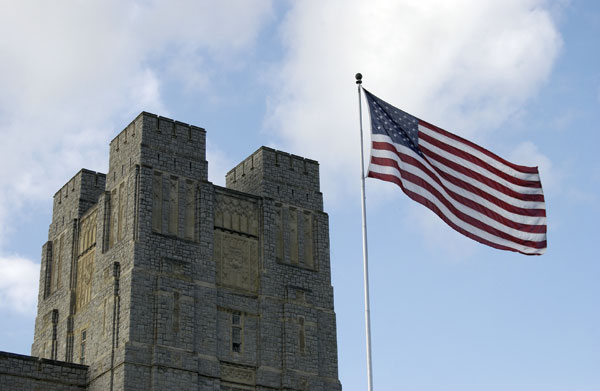|
Recently, I read a new report lamenting the direction of American higher education. It claims that "increased competition and trends toward privatization are threatening the mission of state universities and colleges." While the report is well meaning and posits some good recommendations, I am surprised by the reactions of others when they view what has become an obvious consequence of public policy. Public higher education today is squeezed between two opposing forces. On the one hand is the movement toward low-tax and smaller state government. On the other hand, there are high expectations for public institutions to provide quality education and research-based economic development.
Frankly, we share these high expectations. Virginia’s governor asks that the state's academic-based research hit $1 billion by 2010 and that colleges help K-12 school systems improve achievement. The state expects us to increase enrollment to accommodate the Baby Boom population echo. Communities around the state ask us to help bolster economic development efforts. Such goals are consistent with our views of the world. At the same time, we seek to provide the best possible educational opportunities for our 28,000 undergraduate and graduate students. Yet, state support for higher education in Virginia has faltered over the last decade or more. Appropriations per student, when adjusted for inflation, are less today than in 1989. Such public-policy decisions have an impact on the direction of higher education and the concomitant financial model undergirding the system. Although the state's educational leadership and supporters have argued for more than a decade for increased public investment in higher education, we have come to the conclusion that significant new investments are not forthcoming. There are too many demands for state resources and no desire to increase taxation. Over the years, many have admonished university administrators to run the academy more like a business. I can accept some of that premise. We must be efficient. We have customers. We provide a valuable service. People pay for our product and expect something in return. When I hear critics of the system bemoan increased competition, I wonder what the real issue is. Capitalism induces competition, which improves the product and improves management. But is academic competition inherently bad for public institutions? Students make informed choices among different schools before applying. We are vying with other schools for those students. Businesses and government decide among different schools before procuring the services of the institutions and their faculty. We compete and become better because of competition. As a result, our business model is built on the notion that the government partially underwrites our services through public funding of the enterprise, but that we still compete in the marketplace for students and for grants and to provide services. We charge for those services, and the customer expects value in return. For some time, we in higher education have recognized that rising expectations and reduced public funding have been on a collision course. That is why we expect to become increasingly reliant on non-state resources, such as philanthropy, business income, and tuition, to fuel the enterprise. That is why the higher education restructuring legislation (formerly charter) is so important. As public sentiment increasingly considers a college education more a private than a public good, we will see less demand for public investments in higher education and more expectation that costs be borne by the users. At the end of the day, our many stakeholders--students, alumni, parents, government leaders, local communities, and businesses--expect Virginia Tech to maintain the highest quality enterprise possible. Doing so will require more than state appropriations to achieve our goals and meet those expectations.
|
